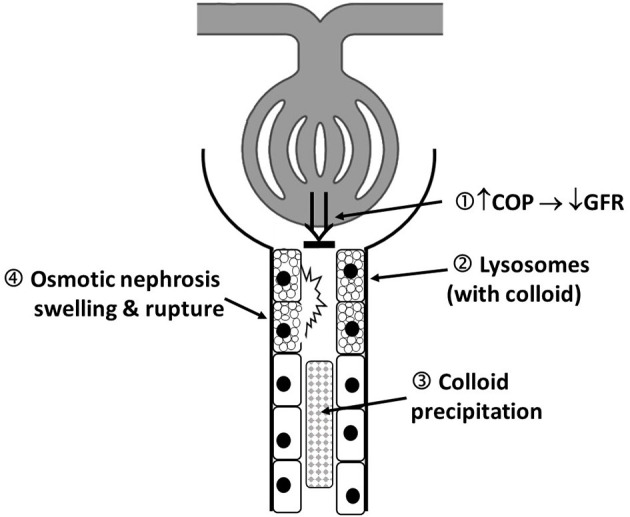Figure 1.

Schematic illustration of proposed mechanism of colloid-induced AKI: 1. Colloid induced increase in plasma COP that decreases filtration pressure and consequently GFR (“hyperoncotic AKI”). 2. Accumulation of colloid containing proximal tubular lysosomes, leading cellular dysfunction. 3. Local hyperviscosity and colloid precipitation, forming of occluding casts. 4. Osmotic nephrosis represents vacuolization and swelling of the renal proximal tubular cells; It can be reversible, and function restored but may also be a first step in the development of irreversible cell lesions. The above mechanisms are not mutually exclusive and may occur in combination. AKI, acute kidney injury; COP, colloid osmotic pressure; GFR, glomerular filtration rate.
